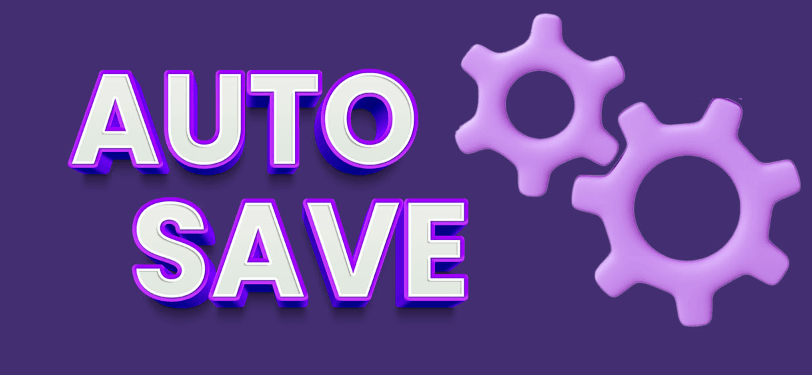What is Autosave in SharePoint and How It Works?
Autosave in SharePoint is a feature designed to automatically save changes made to documents or list items at regular intervals, helping users avoid losing work due to unexpected interruptions or browser crashes.
Autosave periodically saves changes to a draft version of the document or list item. It operates in the background while users edit content in SharePoint, ensuring that modifications are continuously preserved without requiring manual saving.
Mechanism of Autosave
- Automatic Saving: As users type or edit content in SharePoint, Autosave captures these changes and updates the draft version of the document or list item.
- Interval: Autosave intervals are typically set by default (e.g., every few seconds), although some organizations may adjust these settings based on their specific needs.
- Draft Versions: Each Autosave action creates a new version of the document or list item, allowing users to review and revert to previous states if needed.
When Need to Turn Off Autosave in SharePoint?
Although the "AutoSave" feature in SharePoint can help users to focus on their work without the need to manually save changes constantly, reducing the data loss risk caused by accidental browser crashes or power failure, there are several scenarios where users might need to turn off Autosave in SharePoint, including
- Complex Document Editing: When working with highly complex documents or spreadsheets where frequent Autosave interruptions disrupt workflow or cause performance issues.
- Data Entry Accuracy: For tasks requiring precise data entry, where Autosave might overwrite critical information before it's finalized or verified.
- Drafting Sensitive Content: When drafting confidential or sensitive content that requires careful review and approval before saving changes permanently.
- Offline Editing: In environments with intermittent internet connectivity or when using SharePoint offline, where Autosave might not function reliably and could lead to data loss.
- Legacy Systems Integration: Integrating with legacy systems or applications that do not support real-time Autosave functionality and require manual save processes.
- Workflow and Process Requirements: Compliance or regulatory requirements that mandate specific save protocols, such as controlled documentation processes.
- Performance Optimization: When optimizing SharePoint performance by reducing unnecessary server load or resource consumption caused by frequent Autosave operations.
How to Turn Off Autosave in SharePoint
No matter what prompt you to turn off autosave in SharePoint, just follow these steps:
1. Navigate to your SharePoint site and go to the document library or list where autosave is enabled.
2. Click on "Library" or "List" in the ribbon at the top.
3. Select "Library Settings" or "List Settings" from the dropdown menu.
4. Under "General Settings", click on "Versioning settings" or "Advanced settings".
5. Find the autosave settings and disable the feature as per your preference. 6. Save the changes to apply the new settings.
Tips: Customize Autosave Settings Frequency
If you don't want to completely disable Autosave feature in SharePoint, you can consider adjusting autosave frequency:
1. Follow steps 1-3 from the previous section to access document library or list settings.
2. Locate the autosave frequency settings under "Versioning settings" or "Advanced settings".
3. Modify the autosave interval to suit your workflow needs (e.g., every few minutes, hourly, etc.).
4. Save the changes to update the autosave frequency.
Summary
By disabling the feature or adjusting autosave intervals when necessary, users can prevent unintended changes and manage document updates more effectively. Version history enables users to track document revisions, restore previous versions, and collaborate confidently without the risk of losing critical information. These capabilities ensure that users have the flexibility and control needed to work efficiently and securely within SharePoint environments.
If you want to save your SharePoint data for a quick recovery, you can also implement backup method in addition to enabling the "Autosave" feature. In generally, you can backup SharePoint files to local hard drive by manually downloading. However, if the easy access from any device at any time is what you care about most, you had better backup SharePoint to another cloud storage like OneDrive, Google Drive, Dropbox, and so on. In this case, MultCloud can help you a lot.

- Cloud Transfer: Move one cloud data to another without download and re-upload.
- Cloud Sync: Sync data across clouds seamlessly in real time.
- Cloud Backup: Dynamically backup and restore files between clouds.
- Automatic: Set up a schedule to make task automatically run as preferred.
- Offline: Transfer, sync or backup cloud data online without going through local.
- Efficient: Access and manage all your clouds with a single login.
MultCloud Supports Clouds
-
Google Drive
-
Google Workspace
-
OneDrive
-
OneDrive for Business
-
SharePoint
-
Dropbox
-
Dropbox Business
-
MEGA
-
Google Photos
-
iCloud Photos
-
FTP
-
box
-
box for Business
-
pCloud
-
Baidu
-
Flickr
-
HiDrive
-
Yandex
-
NAS
-
WebDAV
-
MediaFire
-
iCloud Drive
-
WEB.DE
-
Evernote
-
Amazon S3
-
Wasabi
-
ownCloud
-
MySQL
-
Egnyte
-
Putio
-
ADrive
-
SugarSync
-
Backblaze
-
CloudMe
-
MyDrive
-
Cubby
